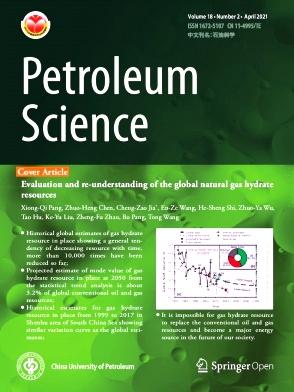利用立方体去除和 GPU 为高维地震数据正则化提供高效抗锯齿和抗泄漏傅立叶变换
IF 6
1区 工程技术
Q2 ENERGY & FUELS
引用次数: 0
摘要
地震数据的采集通常是稀疏和不规则的,这就要求在地震数据处理过程中使用抗混叠和抗泄漏方法对地震数据进行正则化处理。针对高维地震数据中的不规则采样和混叠问题,我们提出了一种采用立方体去除策略的新型四维抗混叠和抗泄漏傅立叶变换方法。我们通过沿径向线堆叠频谱来计算加权函数,应用该函数来抑制混叠能量,然后迭代地选取主要振幅立方体来构建傅立叶频谱。由于采用了立方体移除策略来加速傅立叶重构的收敛性,并采用了精心设计的 CPU/GPU 协同计算并行架构,因此所提出的方法非常高效。为了更好地填补 5D 地震数据的采集漏洞,同时考虑到 GPU 内存的限制,我们开发了 4D 的抗锯齿和抗泄漏傅立叶变换方法,并对剩余空间维度进行了循环。整个工作流程由三个步骤组成:数据分割、4D 正则化和数据合并。在合成数据和实地数据实例上进行的数值测试证明了我们方法的高效性和有效性。本文章由计算机程序翻译,如有差异,请以英文原文为准。
Efficient anti-aliasing and anti-leakage Fourier transform for high-dimensional seismic data regularization using cube removal and GPU
Seismic data is commonly acquired sparsely and irregularly, which necessitates the regularization of seismic data with anti-aliasing and anti-leakage methods during seismic data processing. We propose a novel method of 4D anti-aliasing and anti-leakage Fourier transform using a cube-removal strategy to address the combination of irregular sampling and aliasing in high-dimensional seismic data. We compute a weighting function by stacking the spectrum along the radial lines, apply this function to suppress the aliasing energy, and then iteratively pick the dominant amplitude cube to construct the Fourier spectrum. The proposed method is very efficient due to a cube removal strategy for accelerating the convergence of Fourier reconstruction and a well-designed parallel architecture using CPU/GPU collaborative computing. To better fill the acquisition holes from 5D seismic data and meanwhile considering the GPU memory limitation, we developed the anti-aliasing and anti-leakage Fourier transform method in 4D with the remaining spatial dimension looped. The entire workflow is composed of three steps: data splitting, 4D regularization, and data merging. Numerical tests on both synthetic and field data examples demonstrate the high efficiency and effectiveness of our approach.
求助全文
通过发布文献求助,成功后即可免费获取论文全文。
去求助
来源期刊

Petroleum Science
地学-地球化学与地球物理
CiteScore
7.70
自引率
16.10%
发文量
311
审稿时长
63 days
期刊介绍:
Petroleum Science is the only English journal in China on petroleum science and technology that is intended for professionals engaged in petroleum science research and technical applications all over the world, as well as the managerial personnel of oil companies. It covers petroleum geology, petroleum geophysics, petroleum engineering, petrochemistry & chemical engineering, petroleum mechanics, and economic management. It aims to introduce the latest results in oil industry research in China, promote cooperation in petroleum science research between China and the rest of the world, and build a bridge for scientific communication between China and the world.
 求助内容:
求助内容: 应助结果提醒方式:
应助结果提醒方式:


